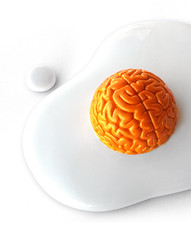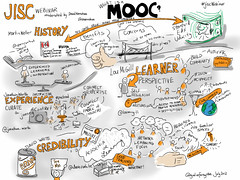
Simon Breakspear opened by saying that "that there is something about learning that is deeply personal". The challenges we face are worthy of our brightest minds and leadership. It has to be radical change, with a global perspective, that will enable us to explore the pressures and opportunities for systemic innovation in education systems in order to provide different, better, and cheaper learning for all.
"Skills have become the currency of 21st century economies" (Andreas Schieicher), and the ability to change and learn new skills will be a fundamental influence on global change. Some of the global drivers of disruption in education include a realisation "that incremental change in education systems is not sufficient to meet the needs and demand for learning in the 21st Century. Economic globalisation, demographic changes, environmental challenges, and new technologies are all exerting pressure on our 20th Century models of education. We now need all people to develop high-level literacies, and have the ability and motivation to learn throughout life" (
source).

In Singapore and Hong Kong (countries that perform really well in
PISA), are now focussing on skills that are beyond the cognitive. The narrow measures of tests are actually holding back progress and capability. People who do well in the test taking often struggle to solve problems in novel situations. The skills for learning in the future are therefore in 3 domains: cognitive,
interpersonal, and
intrapersonal.
The diversity of learners is growing. But, in many western countries there is a decreasing motivation to be part of education, meaning that there are empty seats in say, the UK, while there are students in India who cannot find a place to study.
"Fundamentally, trying to get something out of a broken system won't work". We need a radical new version for learning and teaching, in particular around physical learning spaces, assessment, technology and pedagogy, roles, identities, capabilities of the teacher, and lesson time and sequence. Re-framing these will help us re-imagine learning.

Four big ideas are necessary, Simon believes, for radical innovation. The first is the need to design for learning. At the moment we have the current paradigm of learning + technology. What we needed to do, Simon stresses that we need to cultivate an ecosystem for systemic innovation. "Innovation for learning will require diverse players in the learning game: government, practitioners, entrepreneurs, research institutions, foundations, social enterprises, technologists, and developers. We will explore the opportunities to cultivate disruptive innovation and scale up powerful new approaches, which will assure high quality and equitable learning for all" (
source).
The second is a rapid prototyping approach, where there is an iterative process of re-working, launching, tweaking, and re-launching. We need to learn the art and discipline of innovation. One of the problems is that many institutions have not put in place an agile process for change. It is necessary to re-frame failure. Success and failure are not polar opposites. "What is the minimum set of features that you need in order to begin the process of feedback and discovery?" (Gomez, & Bryk)...it's smaller than you think.
The third idea is to unashamedly seek out disruptive innovations, and harness game-changing ideas, to enhance quality, equity, and at a cheaper rate than before. "When we are doing well we often ask delivery questions rather than disruption questions".
This new learning will be collaborative, social, deep, challenging and stretching. Sometimes learning is sometimes hard. It will involve free content, learning platforms, mobile, be social (platform enabled), and informed by data and learning analytics. These have the potential to re-define learning, especially for those people who have challenges with access. Neil D'Souza (
Zaya) is working on solutions that helps address the problems of access across the world, especially in remote places.
The fourth part of the puzzle is the creation of an ecosystem of diverse players, and seeing government as a platform. This will bring real diversity to the greatest challenges of learning.
Simon poses a couple of questions:
- How might we harness the learning potential of game-changing new ideas in education?
- What lessons can we learn from the educational pioneers and disruptive innovators?
I was really impressed with the way that Simon (and Warren Hall...and the neat tech assistant) coped with technology that kept throwing the toys out of its cot! It was well worth overcoming the issues (a great example of persistance and problem solving!). Some useful challenges. And while Simon's suggestions are 'on a theme' (that seems to have been under discussion for the last 10++ years), it was useful to find out about his suggestions, and also to hear about some concrete examples (even though they tend, at the moment to be relatively small scale).
Image
 Ewan McIntosh's session on Monday was so inspirational we rocked up 45 minutes early to ensure we have a seat for his second session today. The room is completely packed with people sitting on every available floor space, propping up the room at the back and around the sides, and standing outside the double doors craning their necks to see in. The place is a sea of mobile devices, and the wireless is groaning as the Tweets flow. Great stuff. (But maybe a bigger venue...?)
Ewan McIntosh's session on Monday was so inspirational we rocked up 45 minutes early to ensure we have a seat for his second session today. The room is completely packed with people sitting on every available floor space, propping up the room at the back and around the sides, and standing outside the double doors craning their necks to see in. The place is a sea of mobile devices, and the wireless is groaning as the Tweets flow. Great stuff. (But maybe a bigger venue...?)



































